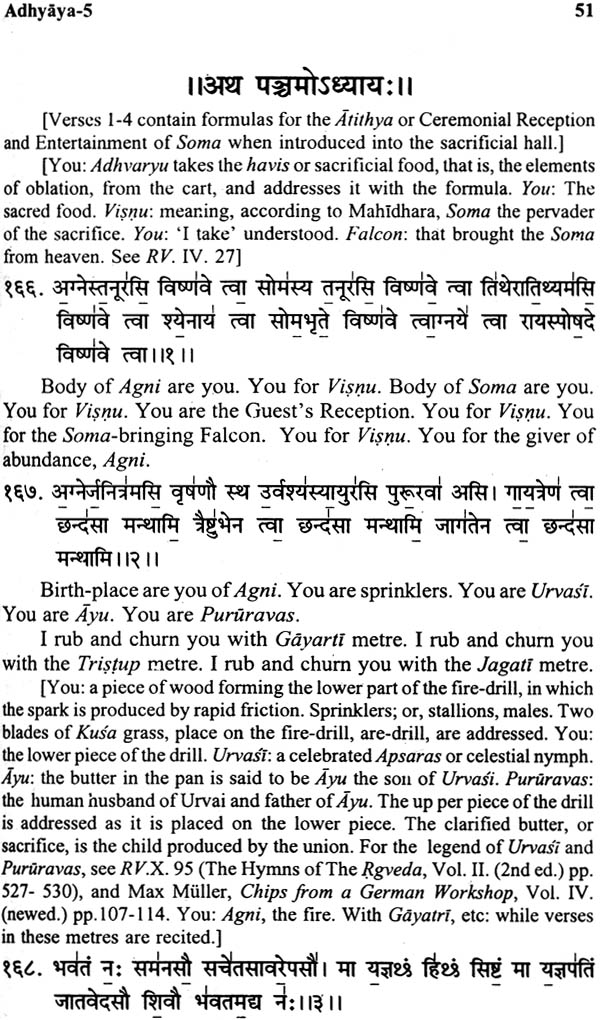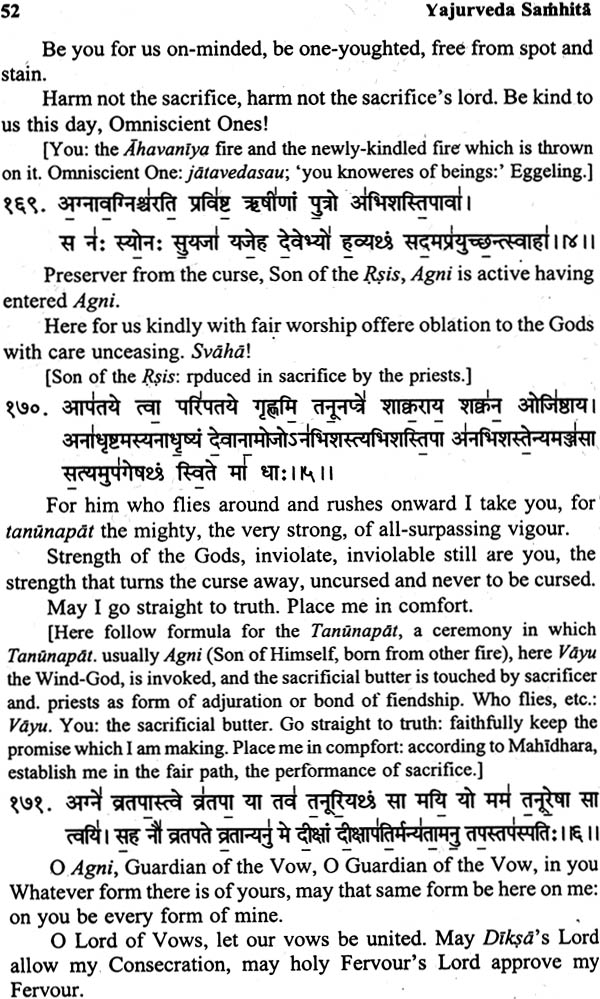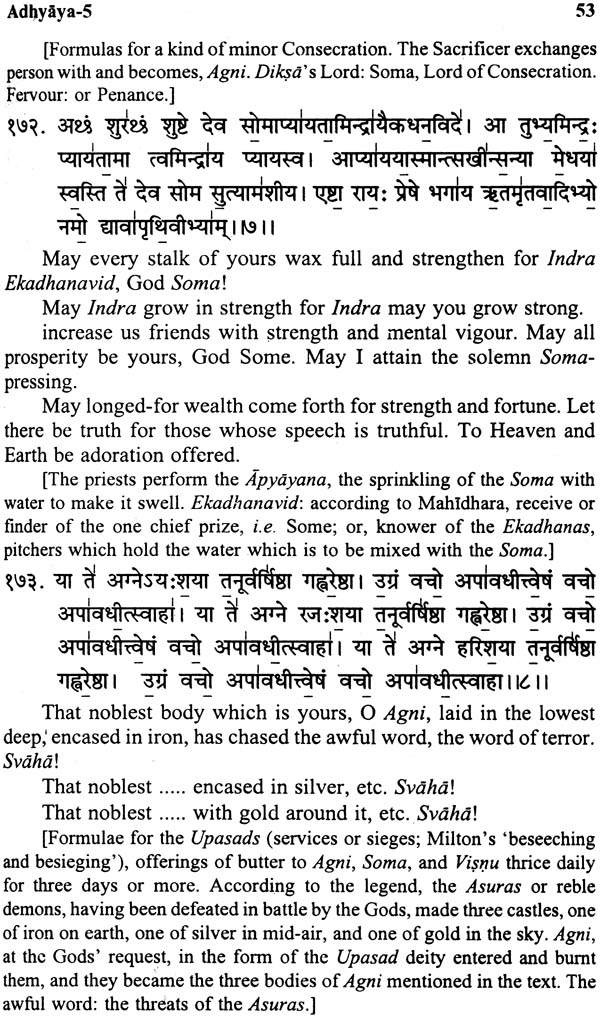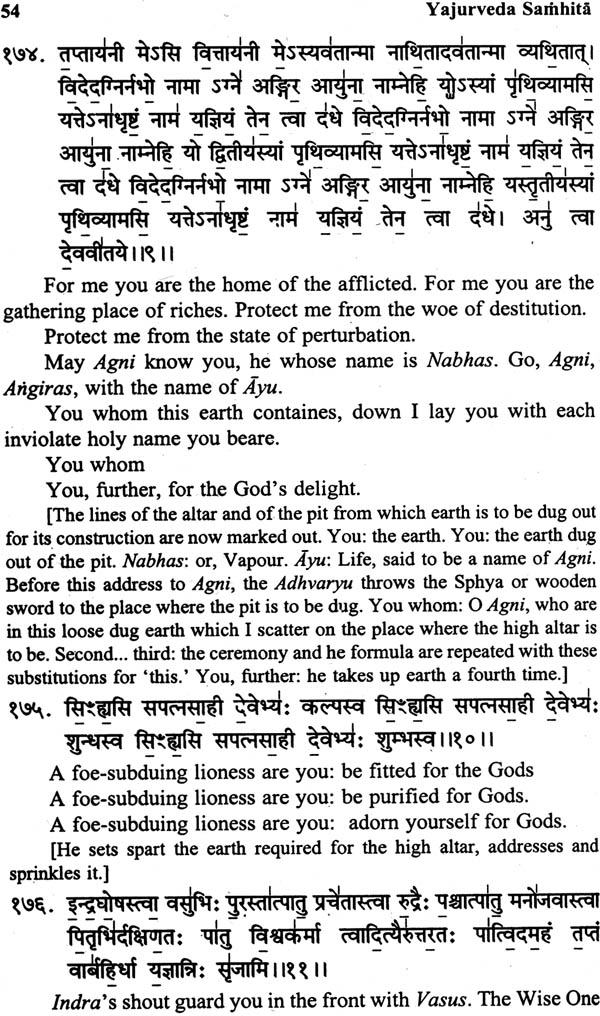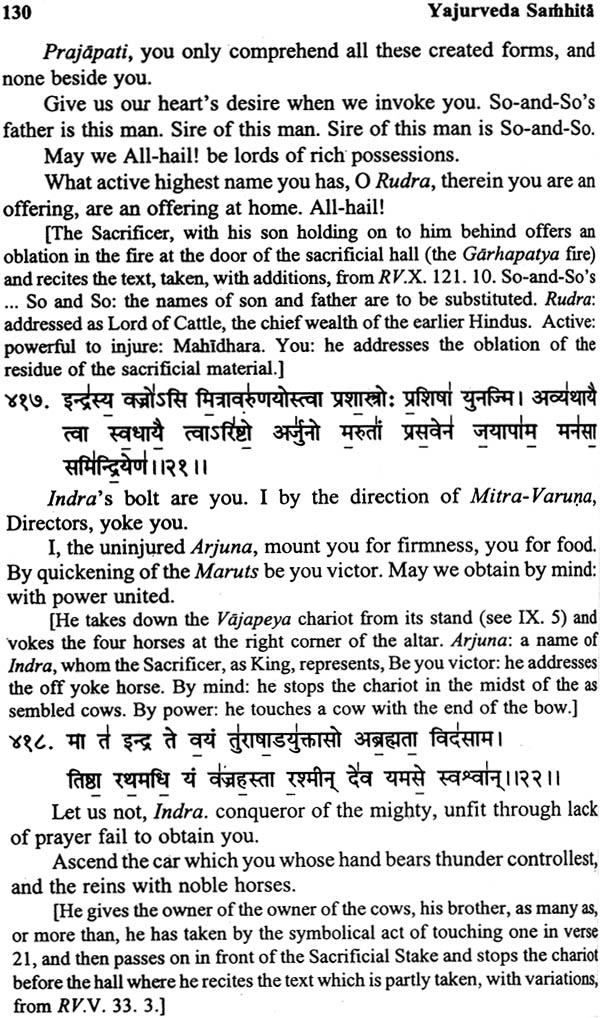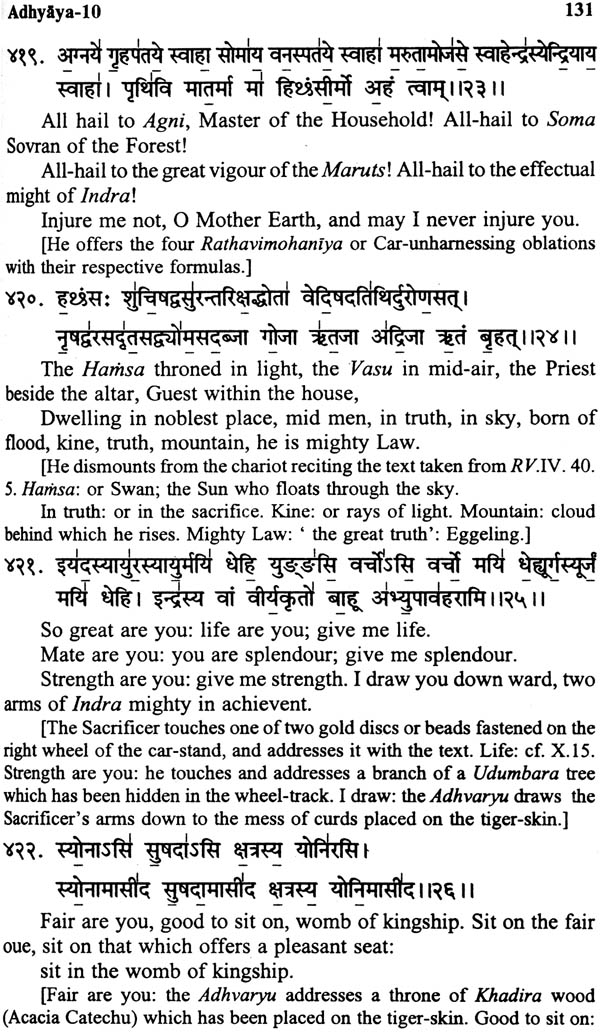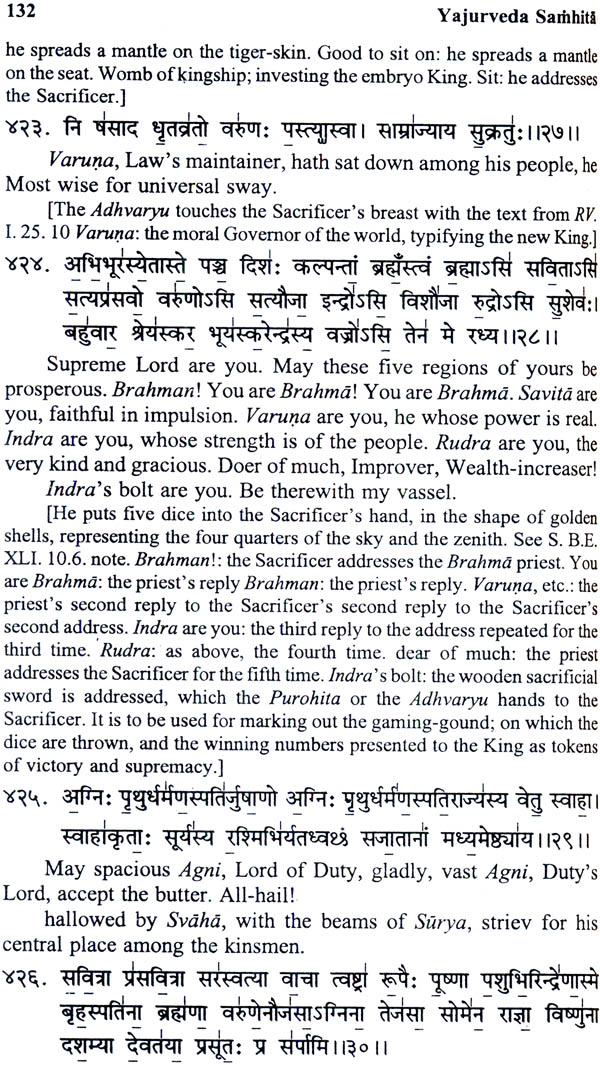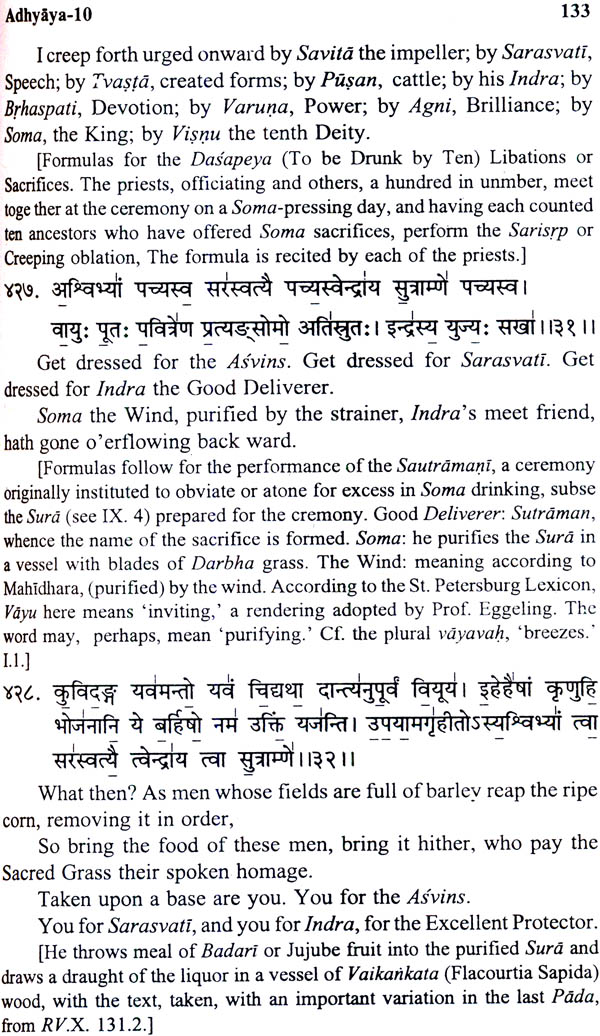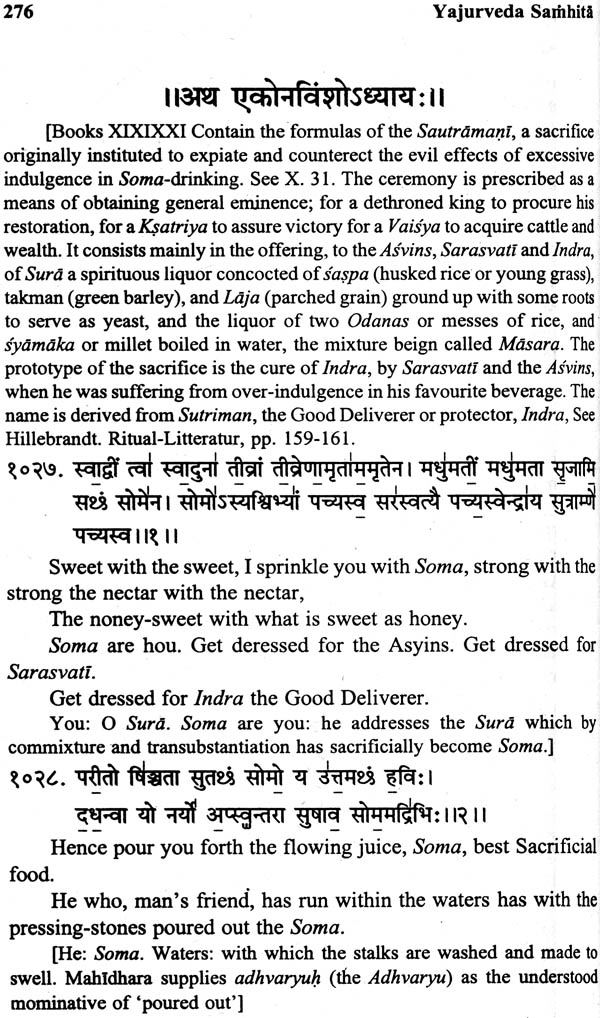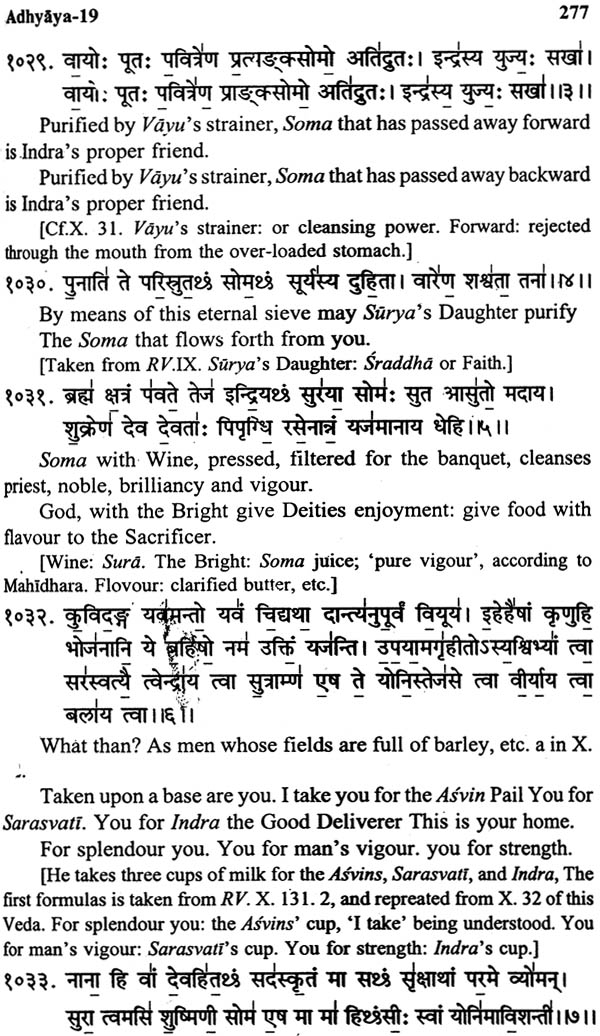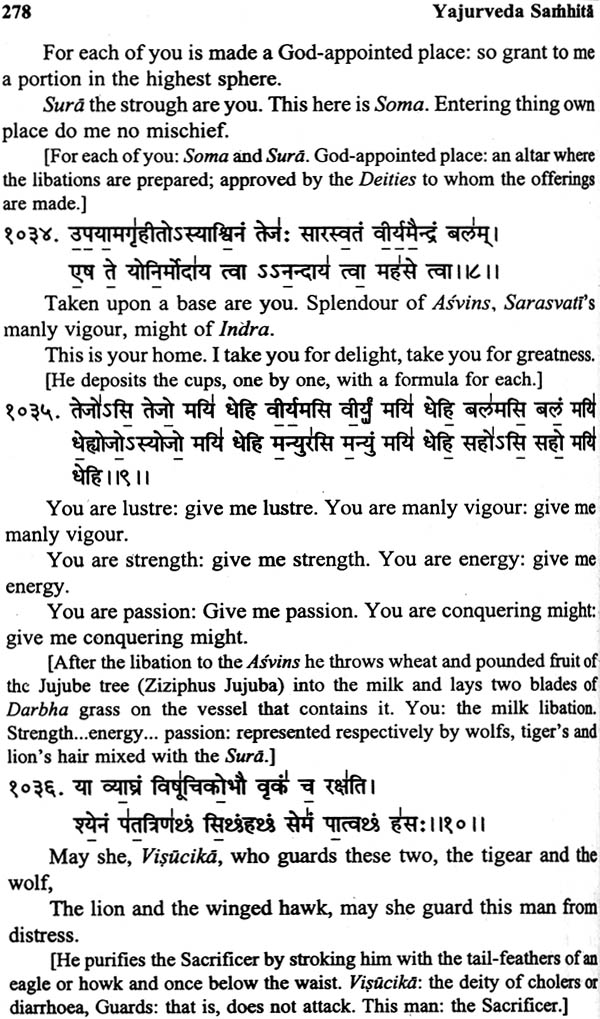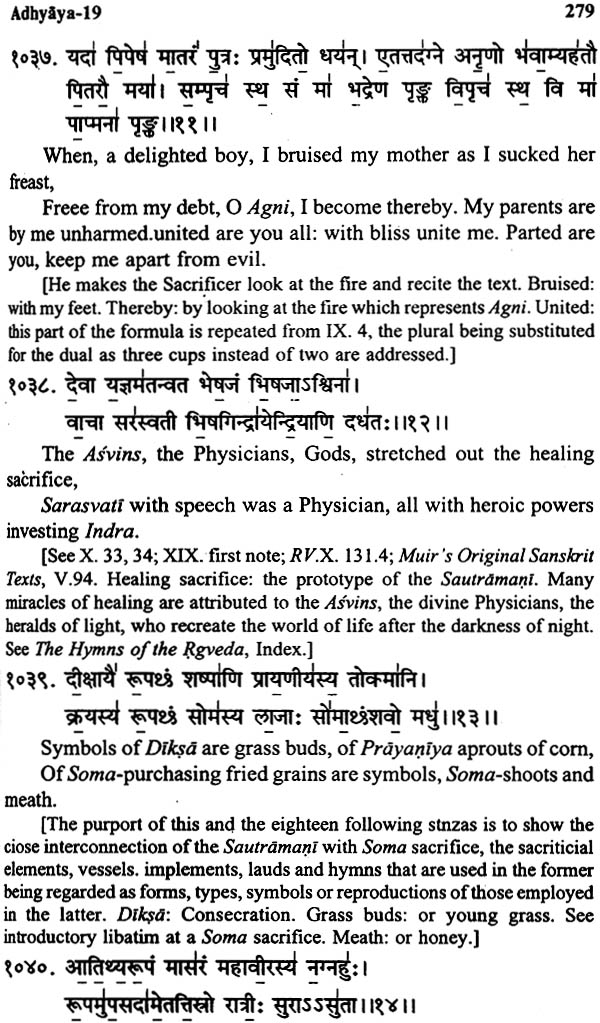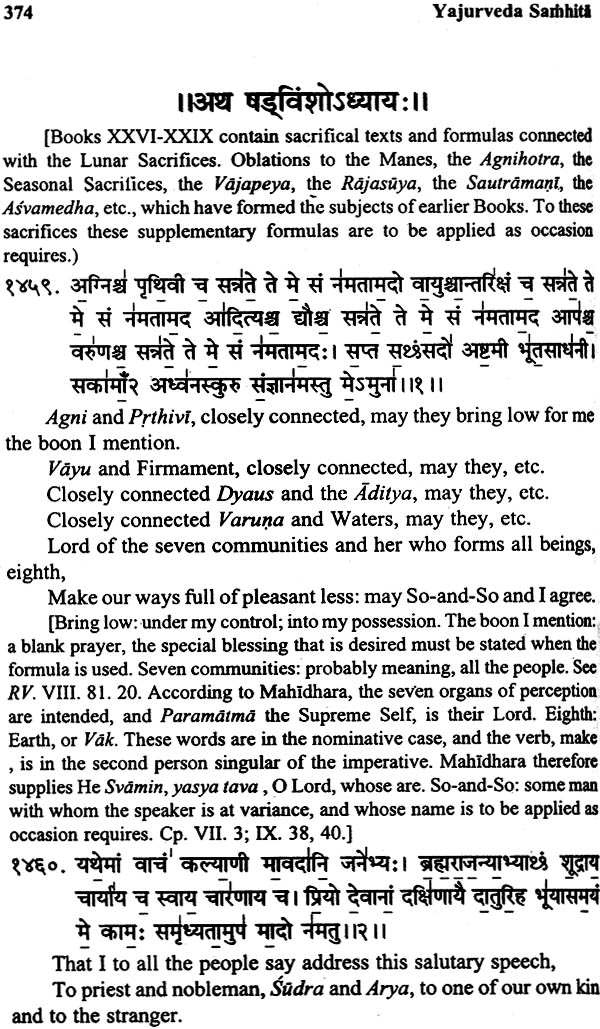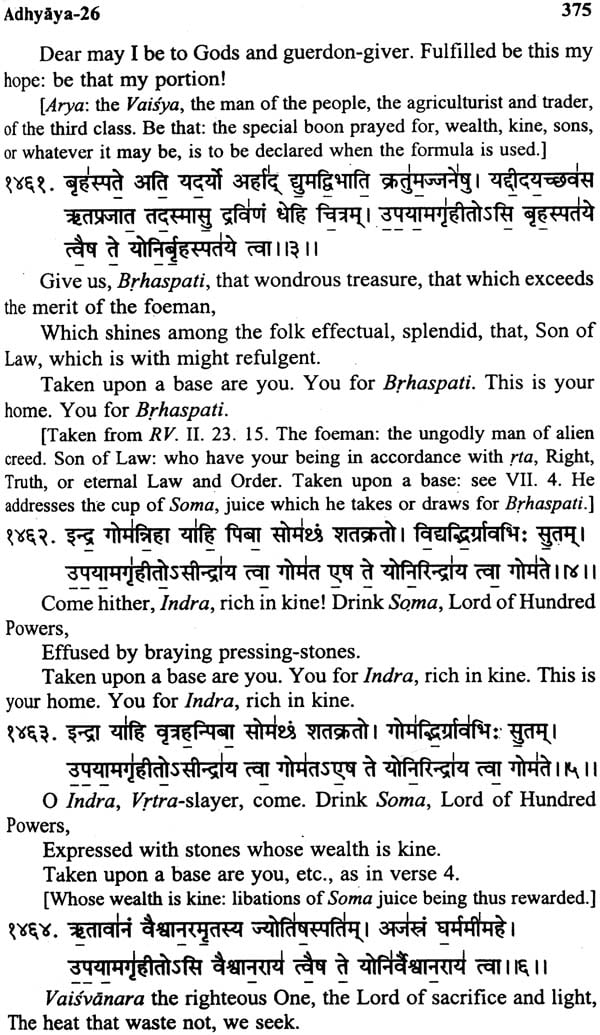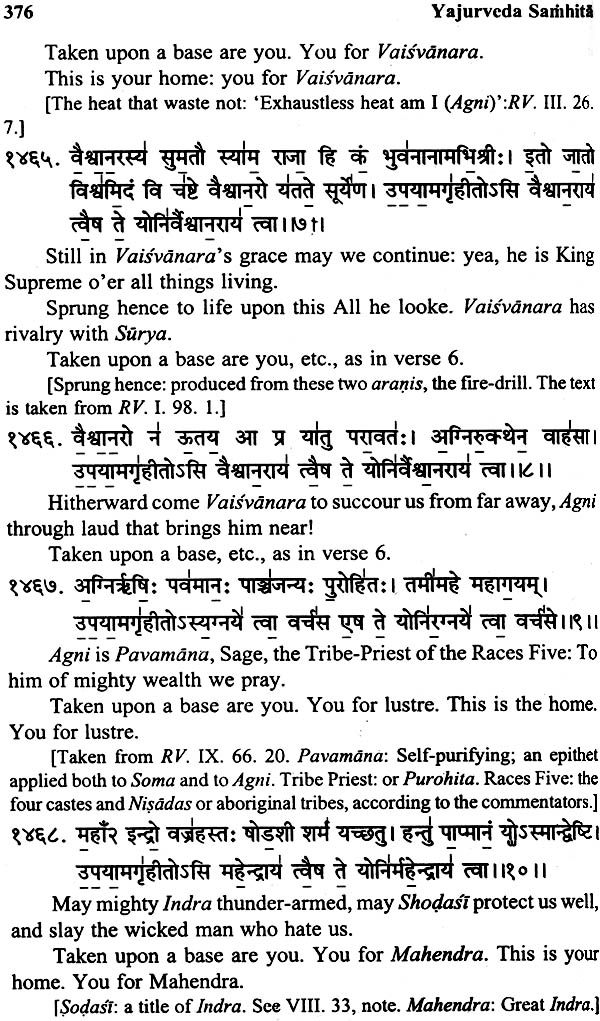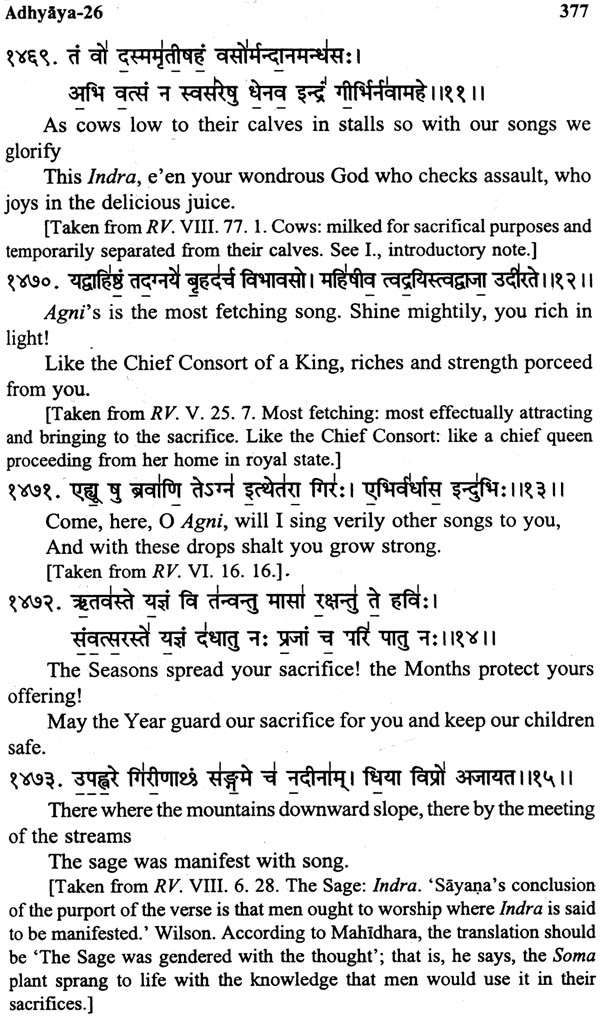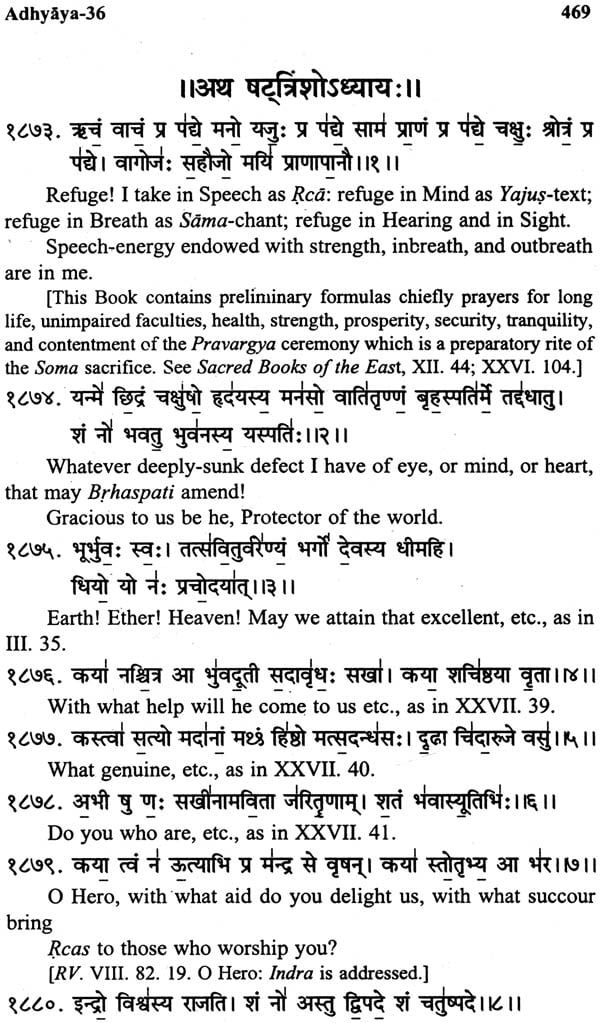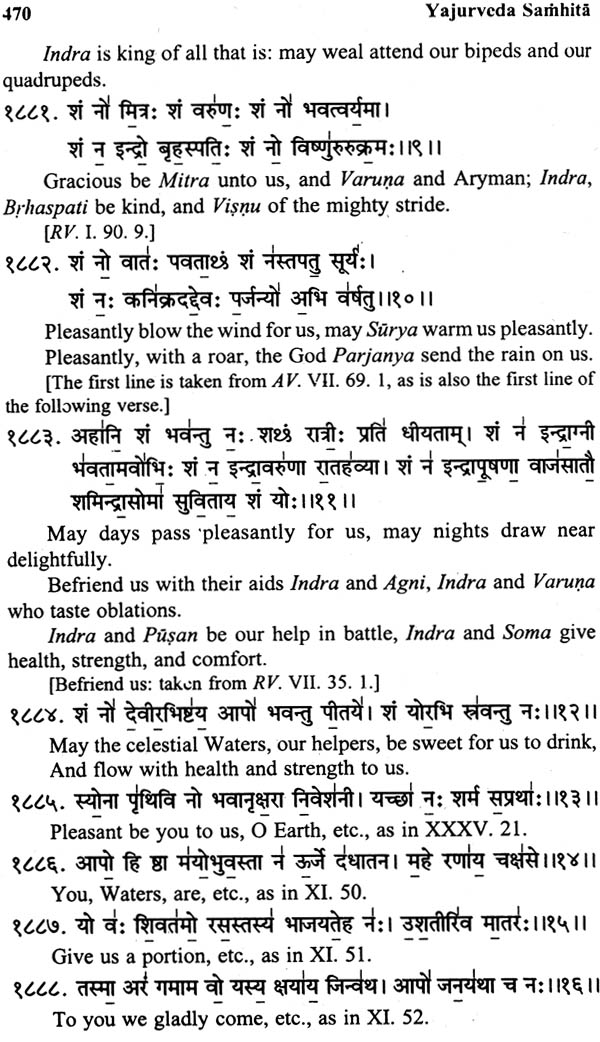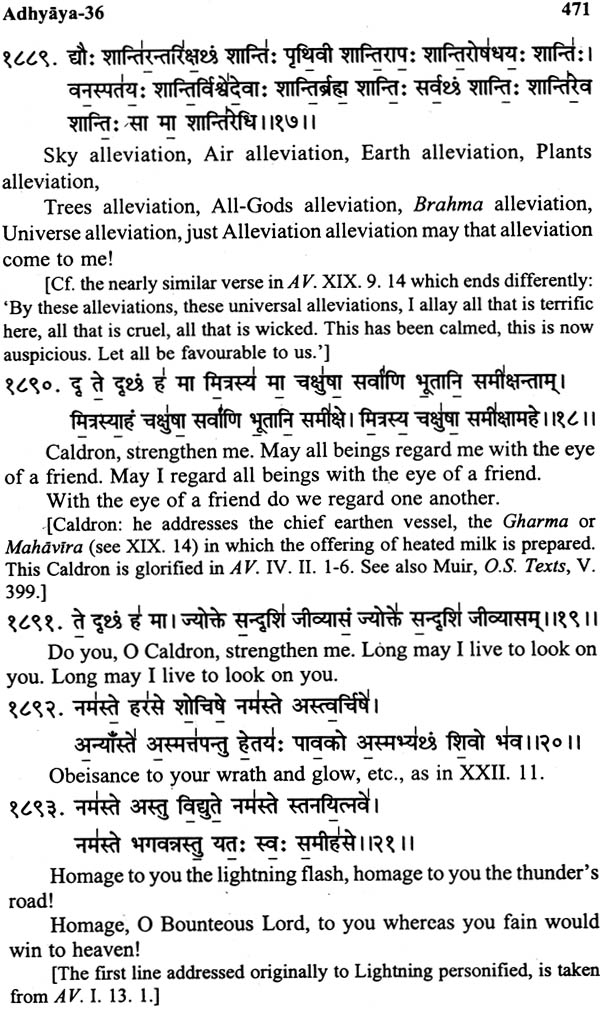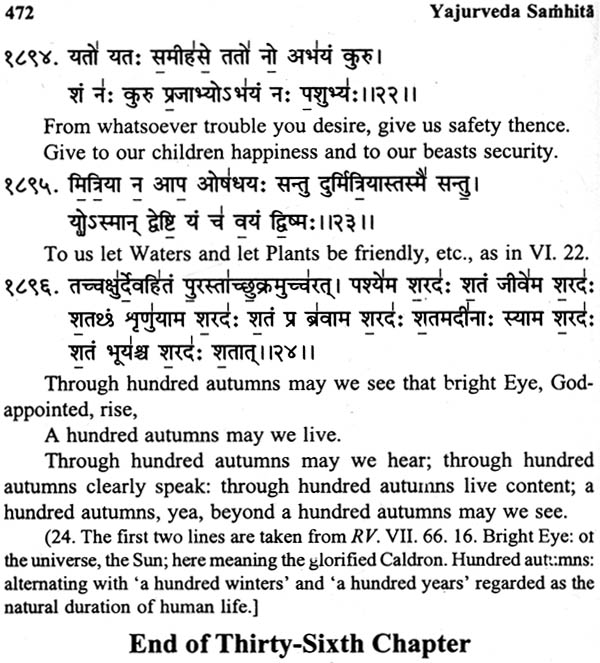
Yajurveda Samhita
Book Specification
| Item Code: | IDE752 |
| Author: | Translated By: R.T.H. Griffith & Edited By: Ravi Prakash Arya |
| Publisher: | Parimal Publication Pvt. Ltd. |
| Language: | Sanskrit Text of the Yajur Veda with English Translation |
| Edition: | 2022 |
| ISBN: | 9788171101368 |
| Pages: | 570 |
| Cover: | Hardcover |
| Other Details | 8.8" X 5.8" |
| Weight | 780 gm |
Book Description
The Vedas are the foremost record of great advance made first ever by humanity since its awareness of the physical world around and the metaphysical element pervading it althrough.
The composition of Vedas could have been possible only after the humans had developed the language as the means of their commu- nication and defined it into the components of phonemes (vocalic and consonantal), and morphemes (i.e. root + suffix combinations). We have reference in the Vedas themselves that prior to the compositions of Vedic hymns, the intellectual defined the crude from of language into the possible combination of root + suffix. daivim vacamayajanta devastam visvarupam pasavo vadanti.
‘The scholars sacrificed for standardization of language, which was spoken earlier in many forms of dialects by the then illiterates in the society?
In fact yajna was taken by the Vedic Scholiasts to mean operation. This yajna/operation was carried out always to make improvement upon the earlier situation and so it was called as the noblest act.
yajno vai sresthatamam karma.
Thus when the operation Standardization of language’ was over operation ‘Composition of hymns’ was started. We have references to this type of operation from RV. 1.164.50; 10.90.16; AV. 7.5.1.; VS. 31.16; TS. 3.5.11 as follows
yajnen yajnamayajanta devastani
dharmani prathamanyasan/
te ha nakam mahimanah sacanta
yatra purve sadhyah santi devah//
The Scholars carried out the operation/yajna (chandas), i.e. composition of hymns by means of first operation i.e. by means of standardized language. The literary couplets composed during second operation/yajna became the first ever dharmas i.e. literary compositions in the literary history of mankind. The seers composed these chandas after appreciation of the properties of the luminous matter (naka) which were already approved by the earlier thinkers’.
In fact all the mysteries unravelled by the seers regarding the luminous matter were pronounced in the forms of literary couplets, or chandas. These couplets or chandas were regarded as dharmas.
This is why, Yaska an ancient Indian Vedic scholar alludes to the origin of Vedas (chandas) as :
saksatkrtadharmanah rsayo babhuva. Nir. (1.20)
‘There were rsis to whom was revealed dharma’.
[Note: For more details, see author’s ‘Vedie Theory of the Origin of Speech’]
Thus to sum up, it can be maintained that as a result of the second great operation, huge number of couplets / chandas were composed by various enlightened rsis on various aspects of scientific truths unravelled by them regarding psychological matter (consciousness) pervading the physical matter (electrons) which is present in the whole material creation / universe in three forms.
l. In latent form present as agni on the earth.
2. In violent form as vayu and indra, a dominating factor in mid- sphere.
3. In ionized or luminous form as surya, a dominating factor in the celestial sphere.
Thus the couplets pronounced regarding the latent form of physical matter, i.e. agni and its co-deities dominant in terrestrial sphere were christened as reds. The couplets produced on vayu, indra and their co-deities were named as yajusas and the couplets on surva and its allied subjects were called as samans. The later Vedic scholars have alluded to this fact as under.
The svetasvatara Upanisad (6.18), Aitreya Brahmana (25.7) and Manusmrti (1.23) had it as
agni vayu ravibhyastu trayam brahma sanatanam
dudoha yajna siddhyartham rgyajuh samalaksanam.
‘To make the great operation a success, three types of brahmas (couplets) were derived. From agni were derived reds, from vayu, yajusas and from surya, samans. Here brahma signifies mantra, this is why, brahmacari was meant for the person who undertook the study of Vedas.
According to .S.Br. (11.5.8.3)
tebhyastaptebhyastrayo veda ajayanta agner
rgvedo vayoryajurvedah suryat samavedah/
‘On account of the three forms of hot matter (tapta) three Vedas, or couplets of knowledge came into being. On account of agni came into being couplets called reds, compiled as Rgveda; on account of vayu, came into being couplets called yajusas, compiled as Yajurveda and on account of surya came into being samans compiled as Samaveda.
The earlier classification of literary couplets in Rk Sama and Yaju was though done on the basis of their subject matter.
The presently available compilation of Samhitas as Rgveda, Yajurveda, Samaveda and Atharvaveda does not seem to substantiate the above mentioned basis. The extant Samhitas have neither been compiled in view of rsis nor deities. Rather the literary style seems to underline their compilation. Rk Samhita consists of couplets embodying the readings of prayer, benediction, praise, etc. (rgarcani); Yajurveda consists of couplets read like prose (yatpraslistapathitam Tata yajuh) and Samaveda consists of couplets (reds) set to the tune of music (gitisu samakhya). Atharvaveda seems to have couplets of miscellaneous nature.
Compilation of Yajurveda
Yajurveda is the collection of Yajusas. All the yajusas were compiled in the form of` Yajurveda keeping in view the various Adhvaras and the person or priest who conducted the Adhvaras was also known as Adhvaryu. Adhvaryu is the name of yajna. Yaska clarifies the very intention of the word Adhvaryu as;
adhvara iti yajnamana, dhvarati himsa—karma tatpratisedhah (Nir.1.8.)
‘Adhvara is the name of Yajna. The root dhvara signifies violence. Hence, Adhvara is the act in which voilenee is prohibited.’
While etymolizing Adhvaryu, Yaska clarifies that Adhvaryu is the priest who deals with the Yajnas.
Adhvaryur adhvaram yunaktyadhvarasya netadhvarm
kamayata iti va api vadhiyane yurupabandhah (Nir. 1.8.)
In fact this concept behind the act of Adhvaryu didn't develop out of Yaska's imagination. But ranging from the Vedic period itself the demarcation of duties of various priests had taken place. Yaska also takes the help of a red while describing the various duties of various priests.
The rca can be read us under
rca tvam posamaste pupusvan
gayatram tvo gayati sakvarisu
brahma tvo vadati jata vidyam
yajnasya matram vimimita utvah/ (RV.10.7l.11)
The above rca was the light house for Yaska to describe and define the various duties of priests. Duty of Adhvaryu priest can be had from the last stanza of the rca which has been explained by Yaska as under-
Yajnasya matram vimimita eko adhvaryuh.
Thus from the foregoing discussion it is crystal clear that Yajurveda was mainly associated with Yajnas. The derivation of Yaju from yaj ‘to perform sacrifice’ also bear out testimony of the above concept. Moreover an etymology of Yaju is discernible in S.Br.10.3.5. 1-2 as ‘yat+ju’ which also suggests the concept of ‘juhoti’ or ‘to perform sacrifice’.
Yajna
Now the question arises as to what is meant by Yajna. While defining Yajna, the author of Kaiyayana Srauta-sutra maintains as;
Dravyam devata tyagah (1.1)
‘To sacrifice a particular material in view of a particular devata is called Yajna’. Karkacarya futher elucidate this concept as under-
‘agnyadidevatamuddisya yo dravyasya purodasadeh tyaga utsargah sa yajnah. Tenaitat siddham devatoddesyena dravyatyago yago yajanamistiriti paryayah.
‘Yajna is sacrificing the purodasa, etc. material keeping in view agni, etc, devata and so it is proved that yaga, yajana isti or whatsoever it may be called, is always sacrificing the material in view of devata.’
In fact all the yajnas described in the Yajurveda are not the sacrifices in the literal sense, rather they are the metaphorical acts symbolizing physical, astronomical and spiritual significances. This fact has been disclosed in the Sankhayana Grhyasutra as under:
adhidaivamathadhyatmamadhiyajnamititrayam
mantresu brahmanesu caiva srutamityabhidhiyate (1.2.18.19)
Now we may discuss here under the origin of rituals.
| INTRODUCTION | v-xlvii | |||||||||||||||||||||||||||
| ||||||||||||||||||||||||||||
| YAJURVEDA SAMHITA | 1-500 | |||||||||||||||||||||||||||
| MANTRANUKRAMANI | 501-524 |
